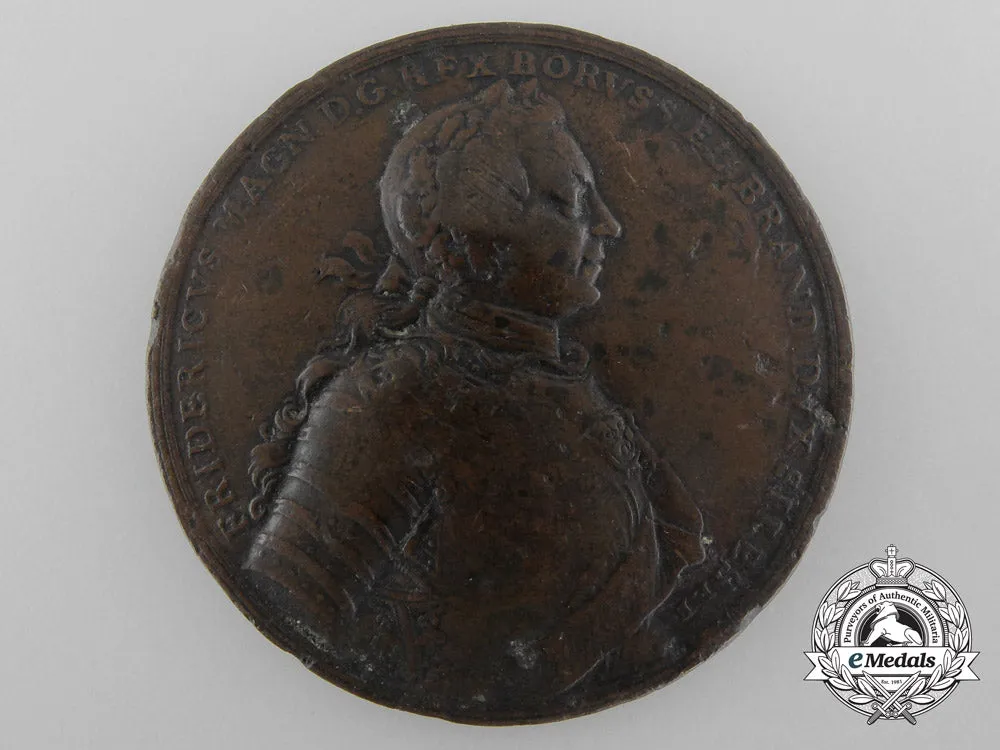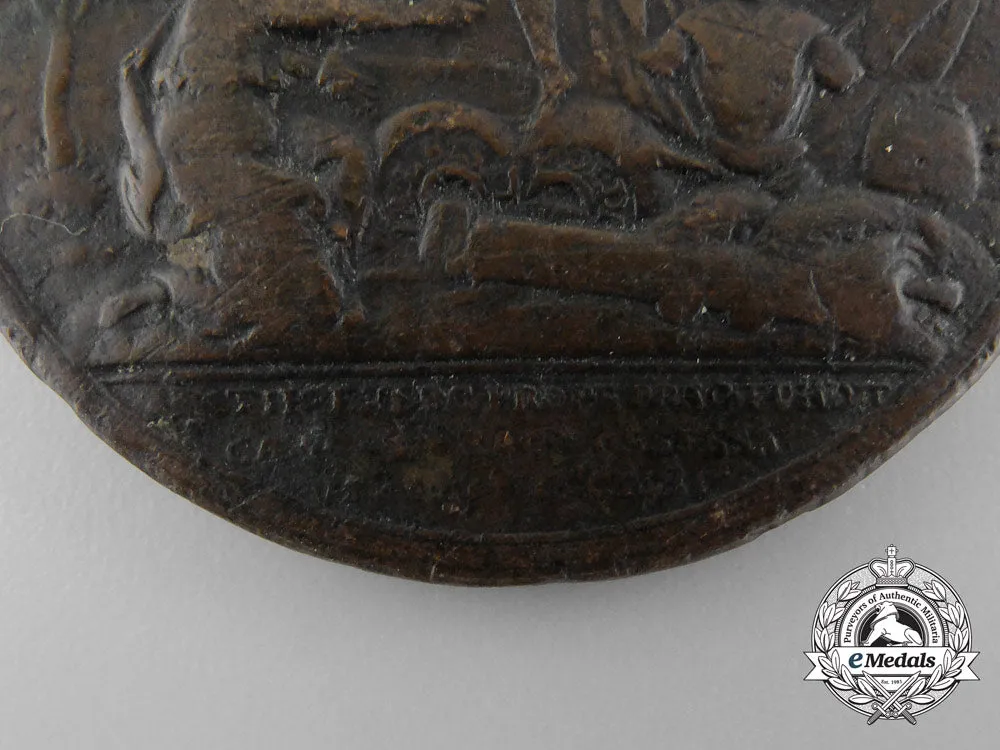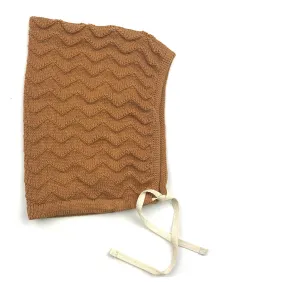Bronze, designed by Johann Holtzhey, obverse illustrating the right-facing bust of Frederick the Great, wearing armour, surrounded by the inscription in Latin "FRIDERICVS MAGN.D.G.REX BORVSS EL.BRAND.DVS SILES ET", reverse illustrating a winged female personification of Victory in the centre, lightning bolts extending from her right hand, a kneeling woman (Empress Maria Theresa) at her right below, inscribed "ABLISI" and "MOLDA" under her feet, the inscription in Latin "VICTORIA FRIDERICI MAGN" having worn off the shield in her left hand, surrounded by the inscription "FAMA.PRUDENTIA.VIRTVTE", inscribed "AVSTREXERC.PROPE.PRAG.TVNDIT CAESO ET PRAGA.OBSESSA. VI.MAJI.MDCCLVII." at the base, 47.7 mm, surface wear, contact marks, edge nick, fine.
Footnote: Frederick II (AKA Frederick the Great, January 24, 1712 – August 17, 1786) was King of Prussia (1740–1786) from the Hohenzollern dynasty. He is best known for his brilliance in military campaigning and organization of Prussian armies. He was also a patron of the French philosopher Voltaire and an advocate of Enlightened Despotism as a form of government, with this type of government illustrated by the winged Victory kicking the crown from the head of Empress Maria Theresa of Austria. The Battle of Prague was fought during the Seven Years' War, on May 6, 1757, between 67,000 Prussian and 60,000 Austrian troops. The battle was inconclusive, with the Austrians withdrawing and the Prussians, having suffered heavy casualties, choosing not to pursue the Austrians. Prussian propaganda portrayed the battle as a victory. The medal was designed by Dutch medalist and mint master, Johann Georg Holtzhey (1729-1808).

















